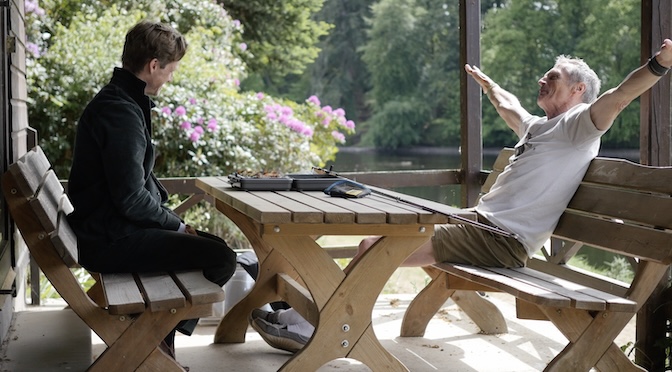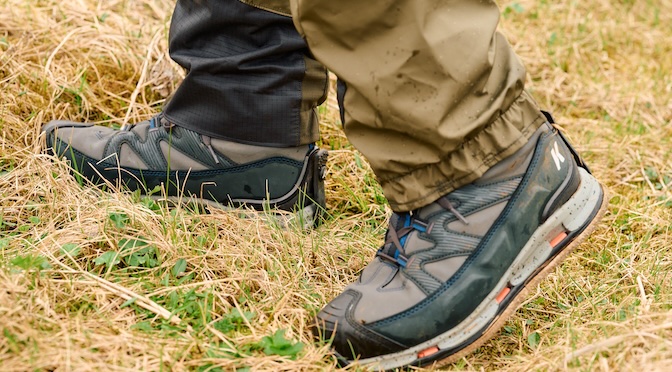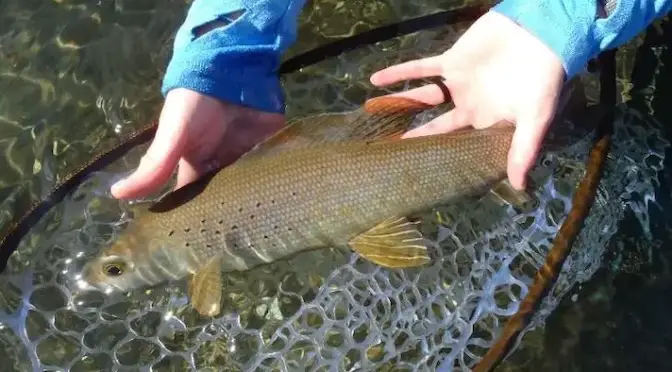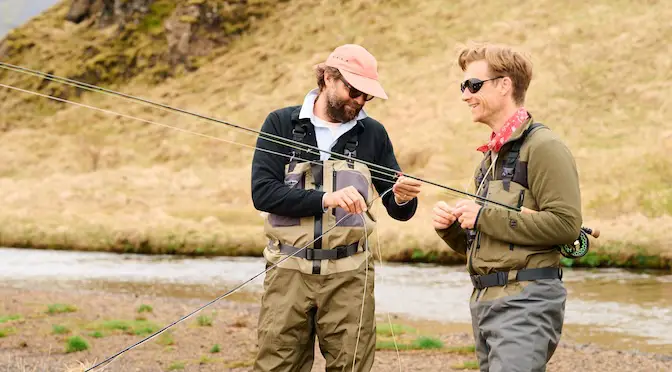Last updated on January 10th, 2024.
Japanese designer Tokihito Yoshida became well known to a wider public by designing the Barbour Tokihito jacket (Tokito jacket) that Daniel Craig wore in “Skyfall”. Less well known is the fact that he collaborated with the long-established British brand on a number of occasions to create fishing jackets. We talked to Tokihito also known as Tokito about his philosophy, fly fishing and sustainability.
What do you need in order to “receive” an insight into creating, Tokihito?
To design and create clothing, I believe you need learning and curiosity.
Please tell us about your upbringing and path towards design?
Back in 1970 when I was 15, I decided to pursue a career in fashion design. At that time, Japan was going through a turbulent period politically and experiencing economic growth as we developed as a nation. Many young people took part in student movements challenging the relationship with society. I also took part in the movement at the age of 15. It was then that I decided that I could deliver my message to society as a fashion designer.
Does your origin play an important part in your creative process? If so, how?
I believe there are two purposes in creating fashion designs – to make clothes for “attire” and “wearing.” “Wearing” fully demonstrates the functionality of clothing. “Attire”, I believe is to make people feel good about themselves. It is important that my designs are timeless, providing comfort which improves with age the more you wear them. Clothing needs to be sustainable and is not to be thrown away – this is the most important thing in our lives and this is my message to society.
How did you come up with the idea to design the Barbour x To ki to Yoshida fishing jacket?
In 2009, when we launched the Barbour x To ki to collection, all the designs followed the concept of the To ki to 360 collection which I had launched in 2004. It was the idea of a jacket with functionality matching the purpose of driving, riding and cycling. Just a short time before I launched the waxed cotton fishing jacket, I took up fly fishing. I wanted an elegant fly fishing jacket that compared favourably with the same functionality of jackets made with modern high tech fabrics. The waxed cotton fishing jacket that I designed for AW10 was born from this background.
Tokihito, can you talk a little bit about the design, the materials you used and why?
In the past Barbour had made wonderful fishing jackets in waxed cotton but had not done anything recently. For the Barbour x Tokito collection, I proposed a Barbour waxed cotton fishing jacket with traditional functionality. Waxed cotton is a wonderful material to make a fishing jacket with its functionality and texture.
You say that the fishing jacket is “a jacket that you can enjoy wearing and spend time discovering” – can you talk about this thought?
The idea of clothes or making clothes is that it is not the most beautiful thing when it is brand new. My belief is that clothes become better with age. For that purpose, you need to choose a robust sewing method, skill and material, waxed cotton and Barbour sewing technology. Functional detail designs become familiar to each person who wears the jacket as time passes and it will be a new discovery to each person.
What can we learn from Japanese craftsmanship?
I think Japanese craftsmanship is a pursuit and a curiosity towards a given task supported by effort and learning. Within products and cultures that come from Europe and the US, at first it is difficult for us to understand the concept but once we understand, our passion to learn is great. Made in Japan craftsmanship is currently receiving a lot of attention worldwide.
You also talk about that “you try to give meaning to pockets or details” – I like this attitude very much. How do you do that and why is it important to you?
Most of menswear designers have learned a lot from military clothes and workwear and I am one of them. The beauty of military clothes is not only their ultimate functionality but also the design based on necessity without waste. Military clothing has many pockets and details and all of them are made with a purpose and their functional placement is often considered to be beautiful. Of course, these details are designed for a military purpose and are over engineered so deconstruction is essential in our clothing design.
The jacket was designed for Barbour, a traditional British brand. How did this play into your design?
Tokito 360 is a collection that pays respect to Barbour. Until then I did not like the color or the feeling of highly functional chemical materials such as waterproof breathables and I had not worn them in the outdoor or suburbs. My designs with Barbour were made with waxed cotton which was then mixed with new materials to create multifunctional designs. The Barbour x To ki to collaboration began in 2008 with an offer from Mr Andrea, the creative director at WP Lavori (Italian distributor for Barbour) who saw my Tokito 360 collection and asked if this design could be developed with Barbour. It was a mutual desire to collaborate – I loved Barbour products and Barbour x To ki to influenced Barbour.
What is your connection to fly fishing?
I mostly fly fish the upper part of a river and I tend to go alone. The river is surrounded by trees and is quite remote. The walk is uphill, climbing alongside the river and allows me to test the function and comfort of the clothes I have made. The walk empties my mind and exercises my head – it is a place for peace as well as my work place.
Can you talk about what fly fishing is linked to in Japan?
The culture of fly fishing in Japan is quite different to Britain. In Japan you can fly fish quite freely in many rivers or lakes (although there are some restrictions). Catching is the priority in Japan and so a lot of fly fishing is aimed at catching larger fish. So for many, it is not the peaceful, relaxing experience that it is in the UK.
Can you tell us about rivers in Japan?
I can only talk about the river I know which is the mountain stream in the vicinity of our house in Nishi Izu in the Shizuoka prefecture. The environment around the river in this area has been greatly improved due to the reduction in the use of agricultural chemicals used by farmers and the spread of septic tank equipment in each household. In the early summer, it is good to see that fireflies have again returned. Apart from Ayu, (sweetfish), the stocking of fish in the rivers is no longer practiced unless the river is famous. The fly fishing population is on a downward trend but if you do not expect to catch a lot, you can still enjoy catching dwarf rill trout (small trout) or char. I think it is a good environment for someone like me who enjoys walking to their fishing grounds.
Is there a favorite place in the world for you? Can you say a few words about what this space brings out in you?
I spend 70-80% of my time in a rural area in the Southern part of the Izu peninsula, Shizuoka. A short walk from the house I can go to one of the most beautiful coasts and by car, I can go to plains and mountains within half an hour. I have made friends who love reggae, surfing and try to live self sufficiently. I love the daily changes to the beautiful scenery of this environment.






